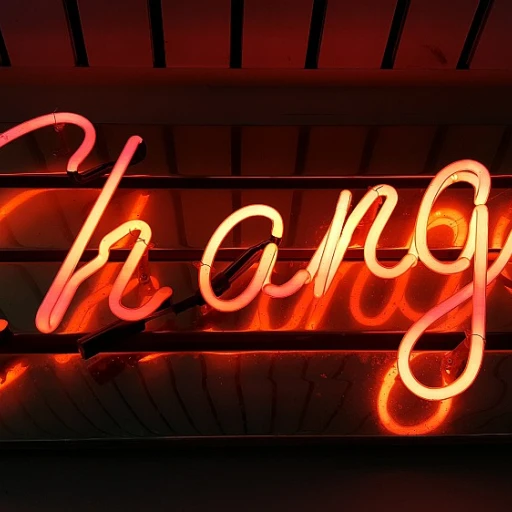
The Importance of a Warm Welcome
Creating a Memorable Initial Experience
The first impression a new hire receives from a company begins with a warm welcome. It's not merely a formality; it's an opportunity to set the tone for what employees can expect in their new work environment. Welcoming employees effectively can significantly impact their integration and future contributions to the team. Understanding this is crucial for creating a positive onboarding experience. A well-crafted welcome letter serves as a strong foundational piece in the process of bringing new employees onboard. This letter is often the first direct message new hires receive from their employer after accepting the job title. It functions as both an informative overview of the company culture and an expression of excitement, conveying that the company is thrilled to have them join the team. By ensuring that this message is clear and engaging, companies can help new employees feel valued and motivated from the outset. Effective welcome messages go beyond mere pleasantries. They should seamlessly blend essential information with a genuine expression of warmth and excitement. This approach helps new hires feel comfortable and supported, fostering a sense of belonging that can enhance their overall work experience. With careful crafting, the welcome message can lay the groundwork for great things to come, enabling employees to integrate smoothly into the company. For a comprehensive guide on creating impactful welcome messages, you might find the insights on crafting the perfect welcome email beneficial. This resource delves deeper into how such messages can be tailored to effectively communicate the company’s vision and values.Key Elements of an Effective Welcome Letter
Elements That Capture Attention
A well-crafted welcome letter sets the stage for a new employee's experience and establishes a foundation for their journey with your company. To make the most impact, certain key elements should be incorporated into the message:
- Clear Introduction: Start by addressing the new hire by their job title and name, creating a personal connection from the first line. This will help the employee feel valued right away.
- Concise Overview of the Company: Provide a brief overview of the company’s mission and values. This component reinforces the company culture and shows new hires what they are contributing towards.
- Importance of the Role: Highlighting how their role fits into the larger team and contributes to the company’s goals can increase engagement and excitement about joining the team.
- Team Introduction: Mentioning team members who they will work with can ease the transition into a new work environment. Adding contact information or a schedule for meet-and-greets can also be beneficial.
- Resources and Support: Include details about the employee handbook, tools, or platforms that will help them succeed. Mention any mentors or buddies assigned to them, ensuring the new hire doesn't hesitate to reach out for help.
- First Day Details: Offering specifics about their first day, such as start time and location, prepares the new hire to start confidently. Additionally, it illustrates the company’s commitment to their seamless integration.
- Personal Welcome Messages: Close the letter with personalized welcome messages from leadership or their immediate supervisor, fostering a sense of belonging and importance within the company.
For more curated message examples that show expertise and warmth, consider how the appropriate tone can enhance your employee's start.
Personalization: Making It Meaningful
Adding a Personal Touch to the Welcome
Personalization is a powerful tool when crafting a welcome letter for new hires. It's not just about being another company with a structured onboarding process, but about making the new employee feel like an integral part of the team right from the start. A personalized welcome message can set the tone for a new hire's experience with the company and the team.
One effective method is to include specific details related to the employee's job title or role. For example, mention how their unique skills will contribute to the team and outline any exciting projects or goals they will be part of. This approach not only makes the message more meaningful but also aligns the new employee with the company culture and objectives from the first day.
Including a warm welcome from the team or department can also enhance personalization. A few words from colleagues expressing how thrilled they are for the new hire to join the team convey a sense of inclusion and excitement. While writing these welcome messages, be genuine and avoid generic phrasing; instead, focus on what truly makes your company excited about this new addition.
Moreover, offering a glimpse into the company culture can be beneficial. Whether through sharing a brief overview of cultural values or inviting the new hire to upcoming social events, these gestures help paint a picture of the work environment they will soon join. You don't need to overwhelm them with details, but a warm, enthusiastic mention can go a long way in making hires feel welcome.
Remember, personalization doesn't end with the welcome letter. It can be incorporated into various aspects of the onboarding process. Details on how to efficiently collect personalized data can be found in our understanding the role of an intake form in onboarding guide. Equip yourself with these strategies to ensure new hires feel valued and eager about their journey with your company.
Sample Welcome Letter to New Employee
Example Welcome Letter for a New Hire
Ensuring an employee feels welcomed and valued on their first day is essential. A carefully crafted welcome letter can set the tone for a positive onboarding experience. Below is a sample letter that can be adapted based on your company's culture and the specific role.Subject: Welcome to Our Team!
Dear [New Employee's First Name],
We are thrilled to have you join [Company Name] as our new [Job Title]! We are excited to see the great things we will accomplish together. Your unique skills and talents will be a tremendous asset to our team.
On your first day, please report to [Location] by [Time]. We will start the day with an overview of our company culture and a tour of our work environment. This will help you get acclimated and meet some of your new teammates. Don't hesitate to ask questions along the way.
Your employee handbook and necessary documents are attached, providing insight into more about our team and what makes us excited to come to work every day. Your mentor, [Mentor's Name], will be available to help you throughout your initial weeks, ensuring you have all the support you need.
Welcome to the team! We are excited to embark on this journey with you and are confident that you'll make an incredible impact at [Company Name].
Warm regards,
[Your Full Name]
[Your Job Title]
[Your Contact Information]
[Company Name]
This message example provides a comprehensive yet concise overview of essential information that facilitates a smooth transition for the new hire. Tailoring the welcome message to reflect your company values makes the message even more meaningful and engaging. Consider incorporating elements of personalization as discussed earlier to make the employee feel even more valued.
Common Mistakes to Avoid
Common Pitfalls in Welcome Letter Crafting
Creating a welcome letter for a new hire might seem straightforward, but certain missteps can undermine its effectiveness, leaving new employees feeling uncertain rather than excited to join the team. To ensure that your welcome messages resonate positively, here's what to watch out for:
- Generic Content: Avoid using a one-size-fits-all approach in your welcome message. While having a letter template can be helpful, personalization should be prioritized to make the new employee feel valued and part of the company culture.
- Overwhelming Information: It can be tempting to include an overview of everything you want a new hire to know about the company. However, an overly dense welcome letter can overwhelm rather than welcome. Strike a balance by including essential information that is helpful yet encourages further exploration, such as the employee handbook or the first day’s agenda.
- Lack of Enthusiasm: The tone of your message sets the stage for how a new employee feels about joining the company. Avoid sounding overly formal or detached. Expressing genuine excitement and conveying the team’s eagerness to work with the new employee goes a long way in setting the right tone.
- Missing Key Details: Ensure that the welcome letter includes important specifics like the start date, time, job title, and any necessary preparations for the first day. Omitting such details can cause unnecessary confusion and stress.
- No Follow-Up Actions: A welcome letter shouldn’t exist in a vacuum. It's merely the opening act in a successful onboarding process. Ensure that follow-up messages and actions are part of the plan to make the transition as smooth as possible for new hires.
Learning from these common mistakes can transform the welcome letter from a mere formality into a meaningful first step in a new employee's journey with the company. For more on how to integrate these insights and foster a positive work environment for new hires, explore related strategies on crafting the perfect welcome email for new employees here.
Beyond the Letter: Integrating Welcome Messages into the Onboarding Process
Integrating Welcome Messages into the Onboarding Journey
While a well-crafted welcome letter sets the tone for a new hire's journey, integrating welcome messages throughout the onboarding process can significantly enhance the experience. A consistent and thoughtful approach helps new employees feel valued and part of the team from day one.
Continuous Engagement with New Hires
Beyond the initial welcome letter, consider sending follow-up messages that provide an overview of the company culture and work environment. These messages can help new employees understand what makes the company excited to have them on board and what great things they can look forward to achieving together.
- Day One Message: A brief message from the team or a direct supervisor expressing excitement about the new hire joining the team can make a significant impact. This message can reiterate the key points from the welcome letter, reinforcing the company’s commitment to a supportive onboarding experience.
- Weekly Check-ins: Regular messages during the first few weeks can help new employees feel connected and informed. These messages might include tips for navigating the company handbook, introductions to team members, or reminders about upcoming events.
- Feedback Requests: Encourage new hires to share their thoughts on the onboarding process. This not only helps improve the experience for future employees but also shows that the company values their input.
Leveraging Technology for a Global Workforce
For companies with a global presence, technology can play a crucial role in delivering consistent and personalized welcome messages. Utilizing platforms that allow for automated yet personalized communication ensures that every new hire, regardless of location, receives the same warm welcome and support.
By integrating these strategies, companies can create a comprehensive onboarding experience that goes beyond the initial welcome letter, fostering a sense of belonging and excitement for new employees as they join the team.












